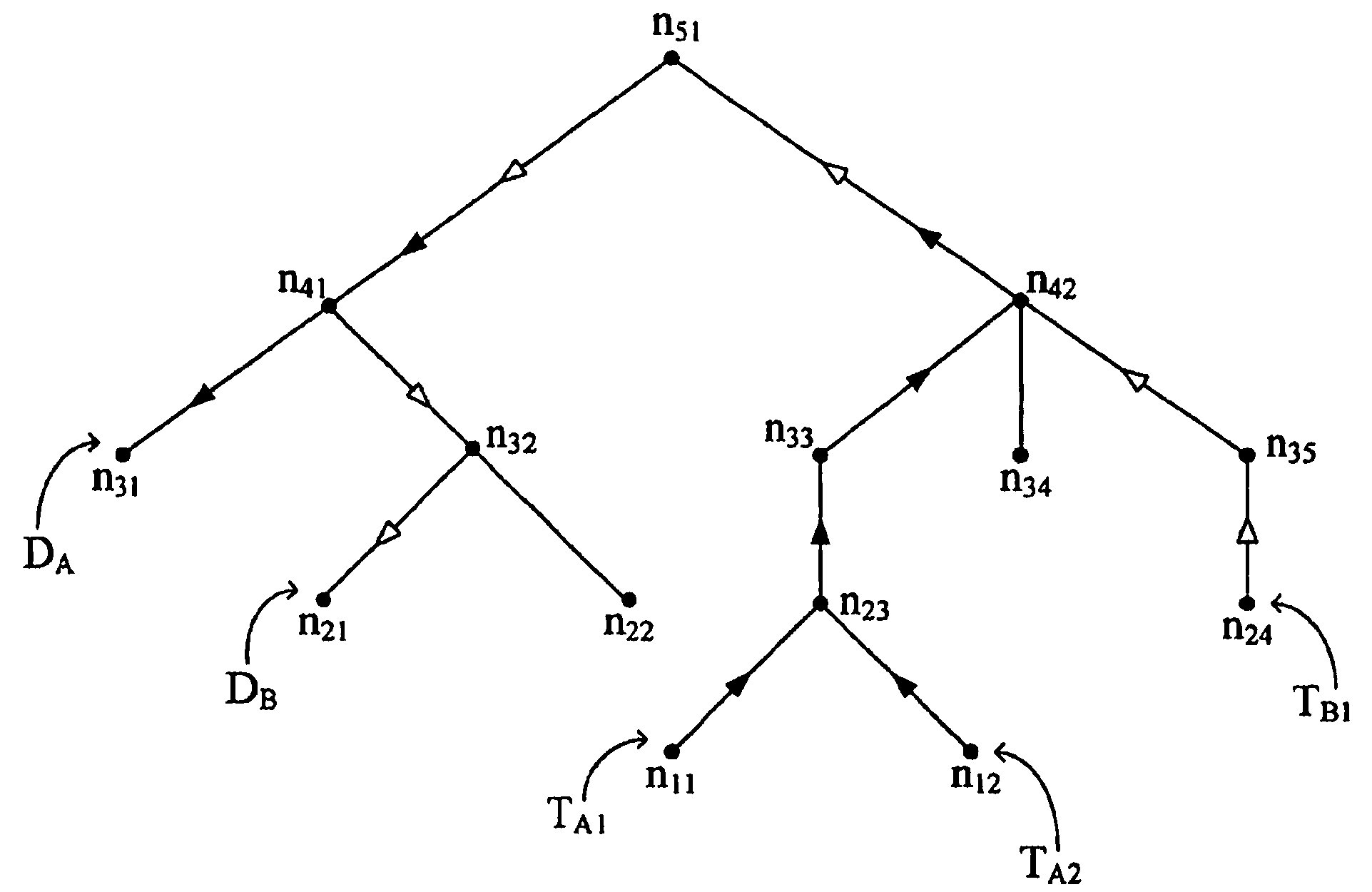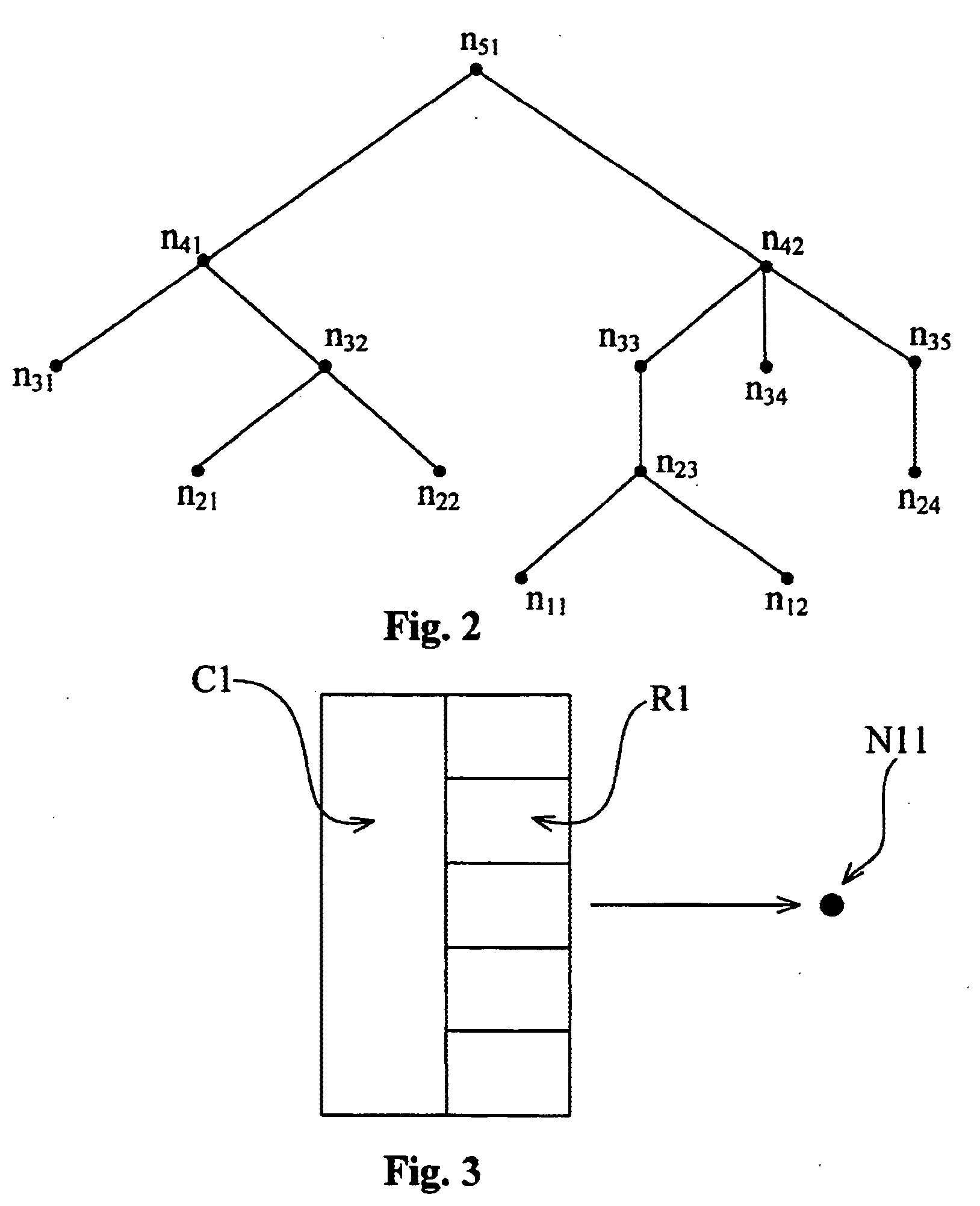Reverse routing methods for integrated circuits having a hierarchical interconnect architecture
a hierarchical interconnection and routing method technology, applied in the direction of electric digital data processing, instruments, computing, etc., can solve the problems of inability to find optimal solutions, and inability to achieve optimal routing resources, etc., to achieve the effect of straightforward implementation
- Summary
- Abstract
- Description
- Claims
- Application Information
AI Technical Summary
Benefits of technology
Problems solved by technology
Method used
Image
Examples
Embodiment Construction
[0023]The present disclosure utilizes the following definitions which shall be understood in proper context its usage and shall not be construed as limiting the scope of the present invention as claimed.
[0024]Graph. A graph is an abstract mathematical construct consisting of a finite set of nodes or vertices. FIG. 1 is an example of a graph with 7 nodes, n0, n1, n2, n3, n4, n5, and n7. In the figures described herein, nodes are denoted by a dot.
[0025]Edges. The lines on a graph that connect two nodes. In a graph, not all nodes have to be connected by edges. Two edges are adjacent if they are incident upon a commo n node of a graph. The graph of FIG. 1 has 9 edges, e1, e2, e3, e4, e5, e6, e7, e8, and e9, where e1 and e2 is an example of adjacent edges. In the figures described herein, edges are denoted by a straight line connecting two nodes.
[0026]Path. A chain of nodes connected by adjacent edges with no nodes repeated is referred to as a path. A one-edge path is an edge connecting ...
PUM
 Login to View More
Login to View More Abstract
Description
Claims
Application Information
 Login to View More
Login to View More - R&D
- Intellectual Property
- Life Sciences
- Materials
- Tech Scout
- Unparalleled Data Quality
- Higher Quality Content
- 60% Fewer Hallucinations
Browse by: Latest US Patents, China's latest patents, Technical Efficacy Thesaurus, Application Domain, Technology Topic, Popular Technical Reports.
© 2025 PatSnap. All rights reserved.Legal|Privacy policy|Modern Slavery Act Transparency Statement|Sitemap|About US| Contact US: help@patsnap.com



